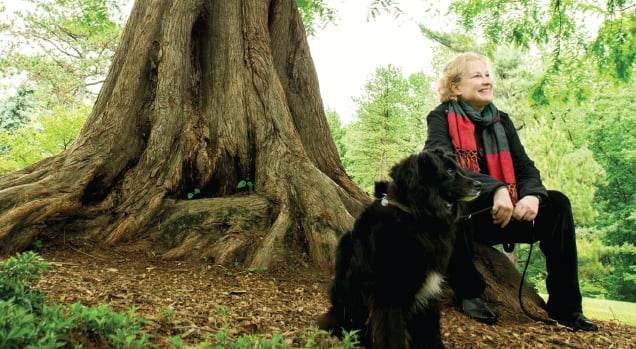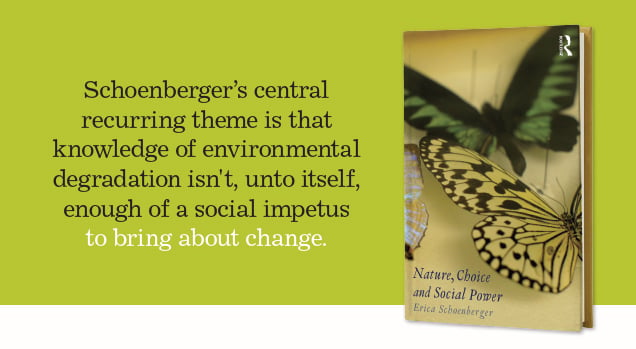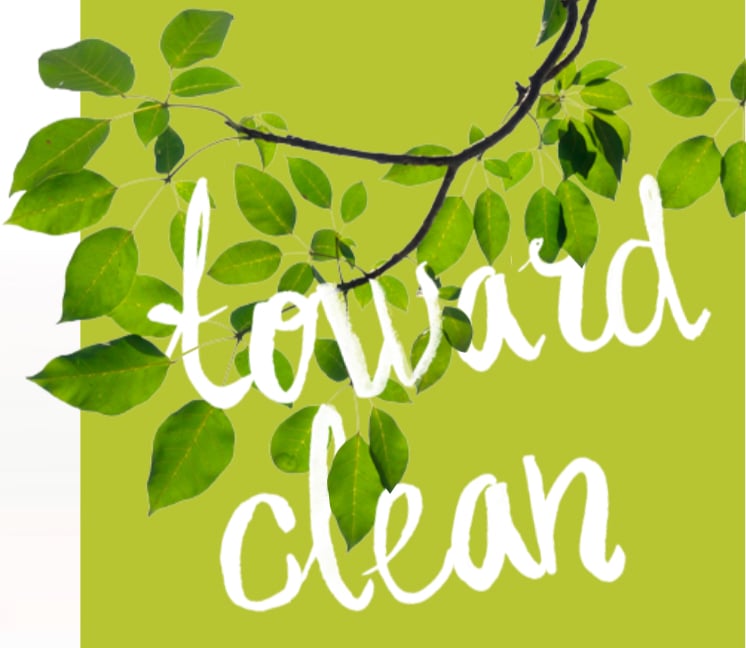As an engineer and an environmentalist, Erica Schoenberger is committed to finding ways to improve our unhealthy relationship with Mother Earth. Her new book lays out causes of our troubles and offers some fairly radical fixes.
Schoenberger’s mission at the Whiting School has long been about connecting engineers with the environment.
It’s the reason her mentor, the late M. Gordon “Reds” Wolman ’49 (A&S), brought the geographer and other social scientists into the engineering school: “He founded my department on the theory that engineers and social scientists needed to live together,” says Schoenberger, a professor in the Department of Geography and Environmental Engineering, who joined the faculty in 1984.
 Today, the native of northern California remains enthused by her students’ desire to improve the environment. She and colleague Bill Ball work closely with the 60-plus students in her department’s Engineers Without Borders to come up with earth-friendly projects. She’s also created a popular course and minor, Engineering for Sustainable Development, which to Schoenberger’s mind means development that’s environmentally, culturally, socially, and economically sustainable.
Today, the native of northern California remains enthused by her students’ desire to improve the environment. She and colleague Bill Ball work closely with the 60-plus students in her department’s Engineers Without Borders to come up with earth-friendly projects. She’s also created a popular course and minor, Engineering for Sustainable Development, which to Schoenberger’s mind means development that’s environmentally, culturally, socially, and economically sustainable.
“In both teaching and research, I try to understand why we change the environment in the ways and to the extent that we do, how we have built environmental problems over time, why we don’t act in our own best interests in the environment when we know what to do, and how to change our trajectory,” Schoenberger has said.
Having been a senior in high school for the world’s first Earth Day, in 1970, Schoenberger admits to being a bit amused by her students’ naiveté in believing they are the first to discover environmental problems—“They like saying, ‘Attention, attention, we’re making a mess! … ’” she says—but she also believes in their ability to change the status quo. So much so that the self-styled radical—“I embrace that description,” she laughs—has just released Nature, Choice and Social Power (Routledge, 2015). For an academic familiar with manifestos—she teaches a course on Adam Smith and Karl Marx—the book reads like a call to arms for millennials and anyone who wonders how the environment has been sacrificed to satisfy the economic needs and wants of the powers that be—whether ancient emperors or contemporary 1 percenters.
 Schoenberger tells her story, the product of more than a dozen years of meticulous research, in precise detail and elegant prose. Her central recurring theme is that knowledge of environmental degradation isn’t, unto itself, enough of a social impetus to bring about change. By focusing on two historically environmentally toxic industries, gold mining and automobile production and operation, Schoenberger shows how markets create and sustain pollution problems. Her conclusion looks at social solutions (see sidebar) that, though perhaps a bit pie in the sky, are nonetheless intriguing. “As I say at the end of the book, everyone is unrealistic about [fixing] the environment, but I think I’m unrealistic in a better way, and in the right direction,” she says.
Schoenberger tells her story, the product of more than a dozen years of meticulous research, in precise detail and elegant prose. Her central recurring theme is that knowledge of environmental degradation isn’t, unto itself, enough of a social impetus to bring about change. By focusing on two historically environmentally toxic industries, gold mining and automobile production and operation, Schoenberger shows how markets create and sustain pollution problems. Her conclusion looks at social solutions (see sidebar) that, though perhaps a bit pie in the sky, are nonetheless intriguing. “As I say at the end of the book, everyone is unrealistic about [fixing] the environment, but I think I’m unrealistic in a better way, and in the right direction,” she says.
In the book’s first section, which examines gold throughout the ages, Schoenberger notes that Rome’s Pliny the Elder weighed in on the environmental dangers of gold mining way back in the first century. Between the common cave-in and the rerouting of vast quantities of water to sluice mountains, Pliny concluded, “it actually seems less venturesome to try to get pearls and purple fishes out of the depth of the sea; so much more dangerous have we made the earth!”
Pliny’s firsthand reportage not withstanding, Schoenberger cites that the quest for gold—and the cachet with which it has historically been held—drove miners through the millennia (often slave or indentured laborers) to be exposed to more and more toxic elements to get at the precious metal. Mercury, cyanide … all were more efficient ways of separating gold from earth and man from his health.
The gold story might seem eternally hopeless, except that Schoenberger details recent instances where decision-makers buck the trend—or simply buck business as usual—and operate with the environment firmly in simpatico with the bottom line. As part of her research, Schoenberger visited the McLaughlin gold mine near the Napa Valley. She called it “the poster child for environmentally sensitive mining.”
Notably, she found a local corporate culture that was operating independently of the parent company. At McLaughlin, environmentally oriented management spent money to safeguard the ecology. This included a comprehensive inventory of local plants and the relocation of a waste dump to avoid destroying a rare plant bed. “A lot of large [environmental] promises were made, and to the surprise of many, [they were] lived up to,” writes Schoenberger, who summers in nearby Berkeley, where she earned her PhD.
One senses she was initially among the skeptical. Schoenberger has spent her life looking at corporate and governmental power brokers and dissecting the reasons behind their oft-spectacular failures. A previous book, The Cultural Crisis of the Firm, took Xerox and Lockheed to task for errors across the board. Then again, Schoenberger has never been afraid of taking on those in power. “I want the work I do to be translatable into action,” she says. “At Hopkins I was very involved with the living wage and anti-war [movements]. I haven’t bashed people over the head with the environment because I didn’t know what I wanted to tell them. Until right now.”
What she has to say is that unfavorable environmental factors, though often an unintended consequence of a capitalistic system, are awfully hard to set right once they’ve become entrenched. The second half of Nature, Choice and Social Power looks at the evolution of the automobile, suburban sprawl, and the deleterious effects that the internal combustion engine has had on the environment.
Schoenberger, who taught a class on the history of the automobile, notes that the ascendancy of the internal combustion engine wasn’t a given. Clean electric cars had the initial jump in the market and were so popular that Henry Ford actually gave one to his wife. But it was Ford’s choice of the internal combustion engine—more ideal for long distance driving than batteries—combined with his invention of the moving assembly line that cut production costs tremendously. These cost cuts were passed onto the market, and Ford soon became the cheapest reliable car in production. Was it an environmentally sound choice? Heck, no. Schoenberger quotes a battery maker of the day, who said, “All the gasoline motors we have seen belch forth … a continuous stream of partially unconsumed hydrocarbons … (a) thick smoke with a highly noxious odor. Imagine thousands of such vehicles on the streets, each offering up its column of smell!”
If that sounds like the very definition of California, perhaps it’s not coincidental that Schoenberger chose Los Angeles as the book’s example of sprawl on a viral level. While the car made travel within the City of Angels possible, it was another vehicle with a foul-smelling engine, the World War II tank, that helped create all those homes.
The tank? “Take away the cannons and mount a giant blade with a hydraulic lift on the front and you have the bulldozer,” writes Schoenberger. “[It] mows down and shoves aside literally everything in its path, and it does this quickly and with far, far less labor than would otherwise be required. It creates an open, treeless, level expanse … perfect for the rapid assembly of standardized houses on standardized lots.” That this kind of terraforming destroyed ecosystems and rivers was traditionally of little matter; people (i.e., the market) demanded affordable housing, and those who stood to profit the most (developers) influenced legislators to write building-friendly laws.
 On one level, Schoenberger is a realist; she sees capitalism, and the demands of the market, as a system in America that is here to stay. But she believes that it’s possible for capitalism to grow in a “clean” way that includes a social consciousness. She suggests higher corporate taxes, creating a surplus that the state could turn into a kind of environmental New Deal.
On one level, Schoenberger is a realist; she sees capitalism, and the demands of the market, as a system in America that is here to stay. But she believes that it’s possible for capitalism to grow in a “clean” way that includes a social consciousness. She suggests higher corporate taxes, creating a surplus that the state could turn into a kind of environmental New Deal.
“The idea is that the state doesn’t need a profit rate in capital; it can invest, as it were, for free,” she says. “The New Deal had people pour concrete as foundations for bridges, public schools, national park trails … that’s a really good use of surplus capital. You can do that on environmental stuff as well. You can imagine a democratic state, a state that’s really in tune with people, having a more important role creating the kind of flight path, a trajectory of investments that would be toward clean and away from filthy.”
Not that her solution wouldn’t be anathema to some, notably the politicos and financial elites who stand to gain the most from maintaining business as usual. Schoenberger argues that to wrest that power away would require “deep democracy,” a term coined by the late University of Chicago political scientist Iris Marion Young. Deep democracy is all about citizen involvement, from the legislative—“It seems to me that campaign finance reform might be the most important cause for environmentalists to take up,” writes Schoenberger—to the use of social media to create environmental awareness and social organization.
In Schoenberger’s vision of the future, the “Internet living room” would take the place of the ancient Greek agora (marketplace) as a gathering spot for an exchange of ideas. “The environment is saturated in the social; there’d be no environmental problems without people,” she says. “But I really don’t want all the people to go away. I want us to reorganize ourselves.” Now that’s a radical idea.
 Toward clean…and away from filthy
Toward clean…and away from filthy
Schoenberger offers a few quick solutions to help the planet:
Pay developers not to build. For projects that carry high environmental risk (i.e., new mines), an upfront government payment to stop development might cost less than eventual remediation.
Support higher taxes on corporations to create government surplus that can be put toward environmental sustainability projects.
Create an Internet living room—think Facetime for the masses—where environmental problems can be discussed and solutions pondered.





